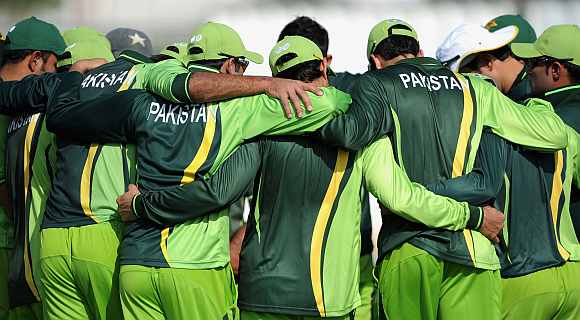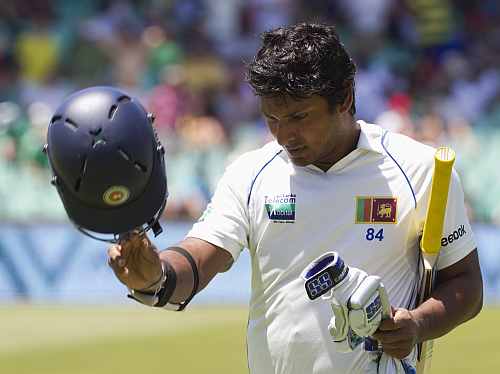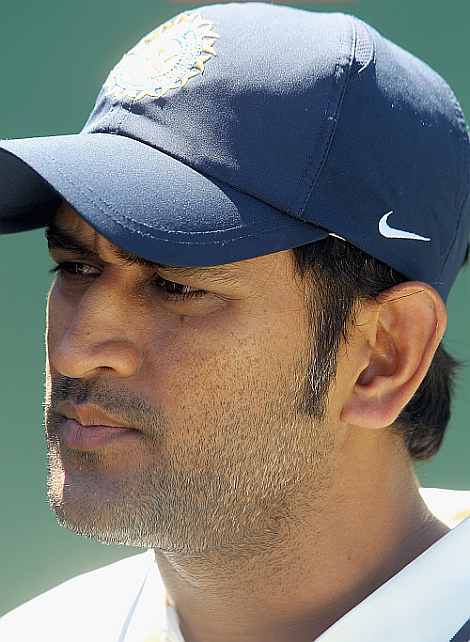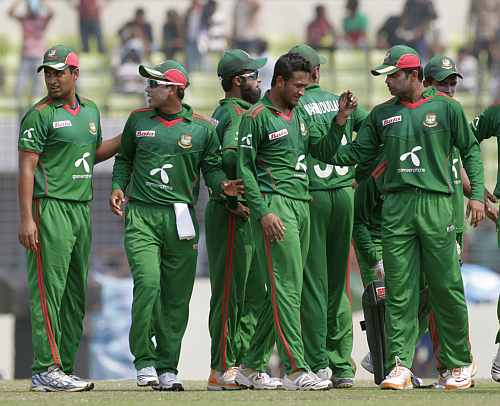Photographs: Getty Images Faisal Shariff
India's strength was never its bowling, says Faisal Shariff, but each time they discover a gem, they seem to perfect the art of pushing him out of the system.
Cricket, like life, moves in cycles.
Nothing can be farther than the truth when we look at the three subcontinent teams: India, Pakistan and Sri Lanka.
In the 1990s, the Indian team was one of outstanding individual talents who could never force a win away from home in Tests.
The Pakistan team was brilliant, with few world-class players, but an outstanding bunch together.
Sri Lanka had gifted batsmen with just Chaminda Vaas and Muttiah Muralitharan to back them up.
Yet, only Pakistan seemed to have the best of results on the field, with Sri Lanka coming a close second, thanks to its 1996 World Cup win making up through the last part of the decade.
India remained also-rans in the decade, always flattering to deceive.
...
Pakistan is on the rise
Image: The Pakistan cricket teamThings changed in the 21st century thanks mainly to the new players brought in by India, which changed the game totally in the region.
India displaced Pakistan as the premier South Asian team; Pakistan regressed thanks to the retirements of its star players; Sri Lanka developed more steel and depth.
India was head and shoulders above its regional sparring partners. Pakistan showed sparks of brilliance. Sri Lanka continued to be infallible at home.
Quite literally, almost at the turn of another decade, the baton seems to be changing hands.
Pakistan is rearing its head again, thanks to new players without any baggage. This time they have all the goods to back them up. A level-headed captain, well-spoken, with an ability to manage a disparate team.
India seems to be slipping into 1990s mode thanks mainly to their lack of options in all departments.
Sri Lanka is slipping further back owing to an over-reliance on a few players.
...
India, Sri Lanka have struggled away from home
Image: Kumar Sangakkara, the Sri Lankan starIt is a challenging time for the subcontinent's teams. There can be no further evidence of it than the way India and Sri Lanka have fared in recent Test matches.
Sri Lanka has more to worry about its fortunes than India, since it has no visible back-ups in the batting department.
India has a few untested batsmen who may or may not graduate.
The other major issue with Sri Lanka is the leadership issue, with an older Tillakratne Dilshan replacing a younger Kumar Sangakkara.
There is no young talent in Sri Lanka who can take up the mantle though Angelo Matthews has been talked about as a potential replacement.
...
Who will replace Dhoni?
Image: Mahendra Singh Dhoni, the Indian captainIndia's possible future captains are either on the wrong side of 30 or, if younger, excel in only one format. So leadership is an issue as well.
Pakistan has a well-defined successor, almost by chance, in Mohammad Hafeez.
But the peace in Pakistan cricket is very fragile. No, not the fragile that Brad Haddin referred to when talking about the Indian team. It is even more fragile.
In Sri Lanka's case, the bowlers have drained up. They keep talking up a 145 kmph-plus fast bowler who turns out to be a popgun. The mystery in their spin bowlers also seems a tad over-rated.
India's strength was never its bowling, but each time they discover a gem, they seem to perfect an art of pushing him out of the system.
Pakistan is well-blessed in the bowling department, but the final performance of its bowling arsenal always flatters to deceive at crucial times.
...
Bangladesh seem to be the weakest link
Image: The Bangladesh cricket teamBangladesh, the other Test team in the region, just does not get it right.
They have the best system in South Asia, a well-defined programme, but their priorities lie elsewhere.
Even before taking its first step -- that is to set up a proper first-class cricket structure -- they have announced an IPL-like league, called the BPL.
The team has the biggest advantage with a set of younger players who are just about 25. But, then again, like with the three giants of the region, Bangladesh seem to perfect the art of planning well.
In a region where everything happens at the last minute, let's hope, for cricket's sake, the idea to stem the rot in the system does not come at the last minute.






Comment
article